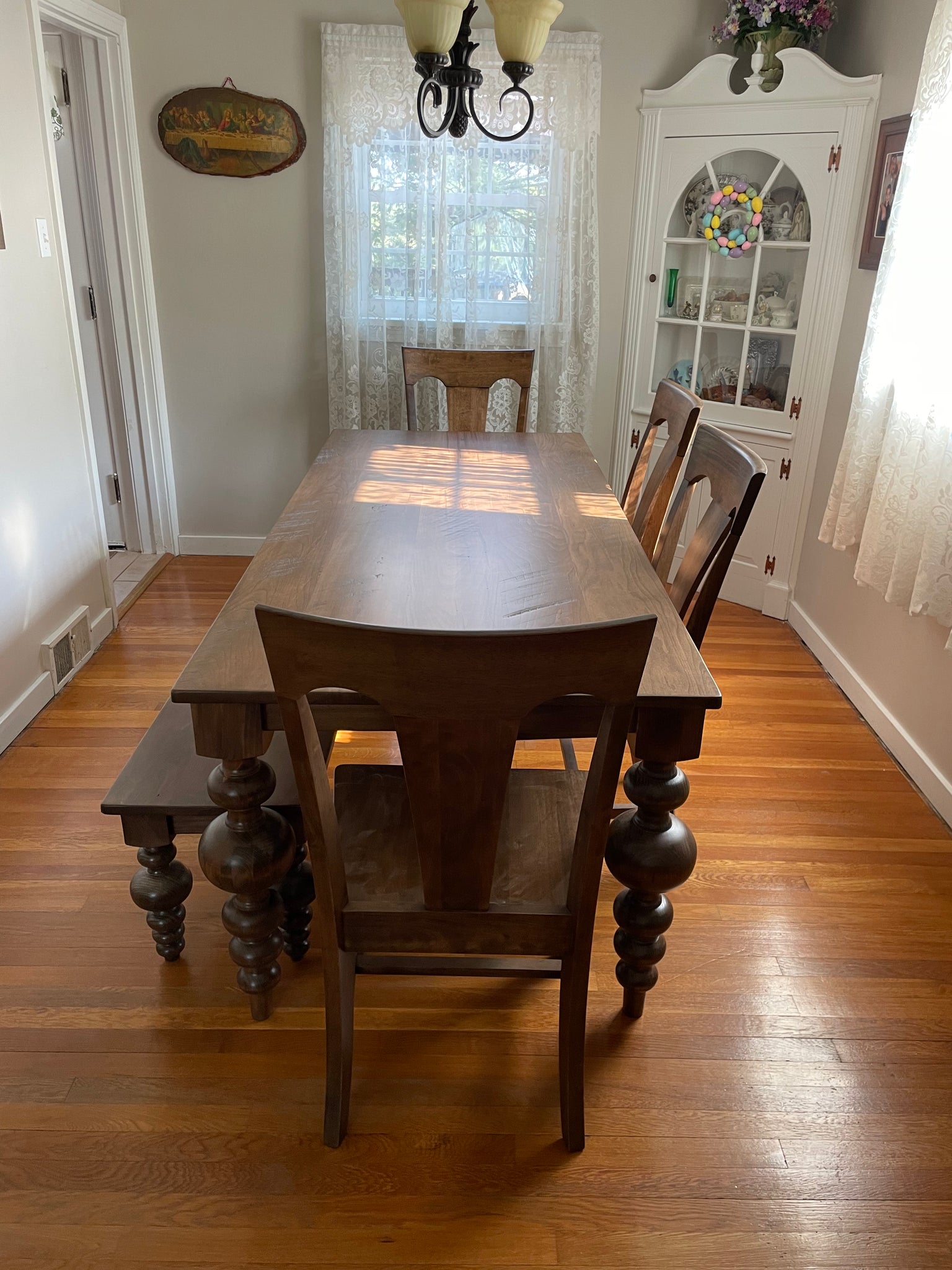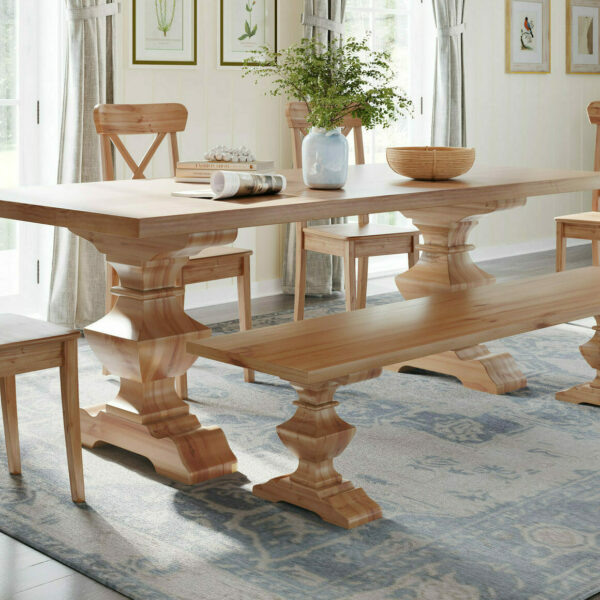Add Charm and Elegance to Your Space with Distinct Dining Room Table Legs
Add Charm and Elegance to Your Space with Distinct Dining Room Table Legs
Blog Article
From Standard to Modern: Discover the Perfect Dining Room Table Legs for Your Style
While traditional styles such as cabriole and turned legs evoke a feeling of timeless sophistication, modern styles like hairpin and geometric options provide an opportunity for striking aesthetic rate of interest. As you take into consideration these elements, the concern remains: how can you flawlessly integrate these diverse leg designs to produce a harmonious dining experience?
Comprehending Table Leg Styles
The range of dining room table leg designs can dramatically influence both the looks and performance of the room. Each leg design contributes one-of-a-kind sensible functions and visual aspects, dealing with diverse style choices and use demands. Recognizing these designs is important for choosing the appropriate dining table that lines up with your overall interior decoration vision.
For circumstances, conical legs use a clean, classic look that can enhance an area's beauty, while pedestal bases give security and maximize legroom, making them ideal for smaller areas. Hairpin legs, a hallmark of mid-century modern-day layout, present a commercial panache, permitting an airy, open feel. Likewise, trestle legs evoke rustic appeal, supplying durable support and a sense of timelessness.
In addition, the option of materials plays a significant function. Wooden legs can bring warmth and appearance, whereas steel choices commonly convey a sleek, contemporary vibe. Ultimately, understanding table leg designs is crucial for creating a natural dining location that reflects personal design while guaranteeing functionality and convenience. By attentively thinking about these aspects, you can improve both the visual and practical allure of your dining room.
Conventional Table Leg Options
When selecting eating space table legs, traditional choices often embody ageless style and workmanship. These styles reflect an abundant heritage and a dedication to top quality, making them excellent for those who appreciate timeless aesthetic appeals.
Among one of the most famous conventional leg designs is the cabriole leg, characterized by its graceful rounded form. This design commonly features attractive makings and is most generally located in Queen Anne and Chippendale furnishings. Another popular option is the transformed leg, which boasts a series of smooth, rounded shapes that give a classic appearance while maintaining security.
Moreover, the straight leg, while simple, provides a strong and unadorned framework that can mix flawlessly with a range of tabletop styles. For those drawn to ornate describing, claw-and-ball feet legs stimulate a sense of splendour and can act as a stunning focal factor in any kind of dining room.
Lastly, pedestal bases, although not strictly legs, provide an alternate traditional choice that enables adequate legroom and can be magnificently carved. Each of these conventional leg designs adds to the total setting of an eating area, weding feature with aesthetic appeal.

Modern Table Leg Layouts
Modern table leg designs use a varied variety of designs that emphasize ingenious products and clean lines. These designs typically focus on functionality while serving as striking centerpieces within a dining room. Minimal aesthetics prevail, with legs crafted from materials such find more info as metal, glass, and crafted timber, which add to a contemporary and ventilated feel.
One popular design is the barrette leg, identified by its slender, tapered framework that provides stability without frustrating the tabletop (dining room table legs). This design is usually discovered he said in mid-century modern-day furniture and can effortlessly match numerous eating table forms. One more pattern is using geometric forms, where legs may handle unbalanced or angular forms, adding aesthetic interest and a touch of creativity

Blending Styles for Unique Spaces
Usually, homeowners seek to create unique dining rooms that mirror their individual design by blending various design components. This strategy permits the unification of varied appearances, causing an unified yet distinct setting. As an example, combining a rustic wooden table with sleek, modern-day metal legs can produce a captivating contrast that elevates the area's general appeal.
Furthermore, integrating vintage table legs with contemporary tabletops can stimulate a sense of background while preserving a modern-day perceptiveness. Such mixes not just showcase specific taste yet likewise motivate creativity, enabling homeowners to curate an area that feels both individual and inviting.
Shade plays a vital role in this blending procedure; picking table legs that match or contrast with the existing shade scheme can improve aesthetic interest. For instance, whitewashed legs can soften the boldness of a dark table surface area, creating a balanced visual.
Tips for Picking the Right Legs
Selecting the right table legs is important for accomplishing both functionality and aesthetic charm in your eating space. Begin by considering the total design of your room. Standard setups benefit from legs that feature complex carvings or turned styles, while modern spaces may ask for sleek, minimalist styles.
Next, examine the elevation and stability of the legs. dining room table legs. Common table vary between 28 to 30 inches in height, so guarantee the legs complement this measurement for comfort. Furthermore, durable products, such as wood or steel, can boost security and longevity
Examine the leg form too-- alternatives include straight, tapered, or pedestal designs. Straight legs offer a classic look, while tapered legs can add a touch of sophistication. Pedestal bases supply enough legroom and are ideal for smaller sized rooms.
Verdict
In recap, picking the ideal eating area table legs calls for careful factor to consider of both modern-day and traditional designs. Standard choices such as cabriole and turned legs provide timeless elegance, while modern designs like barrette and geometric shapes offer a contemporary touch. By integrating leg style, elevation, and material with the overall décor, a natural and welcoming atmosphere can be accomplished. Ultimately, the selected table legs must mirror the desired visual, enhancing the eating experience within the area.
The variety of eating area table leg styles can significantly influence both the appearances and functionality of the space. Inevitably, recognizing table leg styles why not try this out is vital for creating a natural eating area that mirrors personal style while ensuring usefulness and comfort.One of the most famous traditional leg designs is the cabriole leg, defined by its graceful rounded form. Straight legs provide a timeless look, while tapered legs can add a touch of style.In summary, choosing the ideal dining space table legs calls for cautious factor to consider of both modern-day and conventional designs.
Report this page